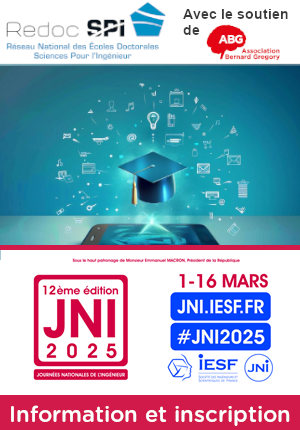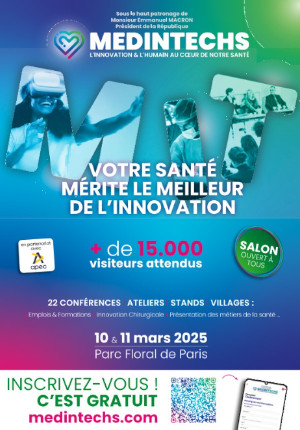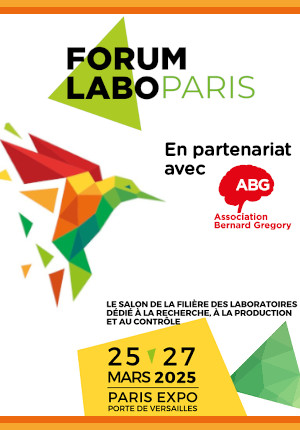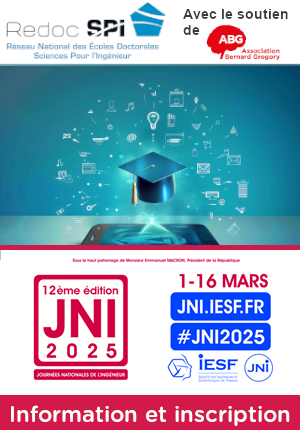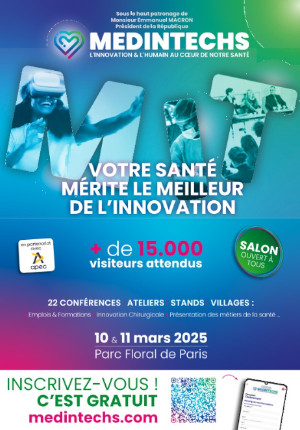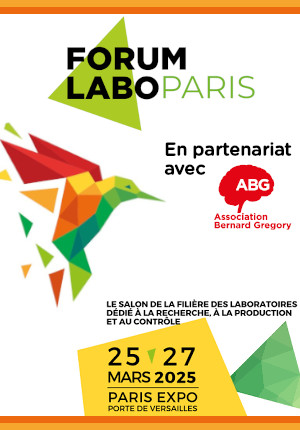Investigation de la relation entre texture magnétique et microstructure dans les cristaux // Investigation of the relationship between magnetic texture and microstructure in crystals
|
ABG-128734
ADUM-61410 |
Sujet de Thèse | |
| 19/02/2025 | Contrat doctoral |
Université Grenoble Alpes
Saint Martin d'Hères cedex - France
Investigation de la relation entre texture magnétique et microstructure dans les cristaux // Investigation of the relationship between magnetic texture and microstructure in crystals
- Electronique
texture magnétique, microstructure, cristaux, synchrotron, rayons X cohérents, tomographie
magnetic texture, microstructure, crystals, synchrotron, coherent X rays, tomography
magnetic texture, microstructure, crystals, synchrotron, coherent X rays, tomography
Description du sujet
Les propriétés physiques des matériaux dépendent non seulement de leurs propriétés intrinsèques, mais aussi de leur microstructure. Les propriétés magnétiques ne font pas exception. Par exemple, les cœurs de dislocations dans NiO sont ferromagnétiques alors que le reste du cristal est antiferromagnétique [1] (Figure 1 du document PDF joint). De même, des déformations élastiques peuvent modifier l'ordre magnétique [2].
Le but du projet est d'explorer expérimentalement les mécanismes microscopiques de ces phénomènes. On utilisera le rayonnement synchrotron, et plus particulièrement les techniques d'imagerie exploitant la cohérence des rayons X [3], pour obtenir des tomographies structurales [4] (Figure 3) et magnétiques [5] (Figure 4) dans des nanocristaux ordonnées magnétiquement avec des résolutions nanométriques. La détermination en 3D des déformations cristallines et de la texture magnétique nous permettra de les corréler, pour mieux comprendre comment elles interagissent. Une attention particulière sera portée aux transitions de phases, qu'elles soient structurales, magnétiques ou combinées, par exemple dans FeRh [6] (Figure 2).
Le projet de thèse abordera toutes les étapes du processus : conception, fabrication et caractérisation des échantillons, mesures synchrotron avec des méthodes de pointe, analyse de données et interprétation. Le travail sera fait en collaboration étroite avec des chercheurs du SIMaP, de l'Institut Néel, et de l'ESRF, entre autres.
------------------------------------------------------------------------------------------------------------------------------------------------------------------------
------------------------------------------------------------------------------------------------------------------------------------------------------------------------
Physical properties of materials depend not only on their intrinsec properties, but also on their microstructure. Magnetic properties are no exception. For instance, dislocation cores in NiO have been found ferromagnetic while the rest of the crystal in antiferromagnetic [1] (Figure 1 in attached PDF document). Similarly, elastic strain can modify the magnetic order [2].
The purpose of the project is to explore experimentally the microscopic mechanisms of these phenomena. We will use synchrotron radiation, and in particular imaging techniques based on X-ray coherence [3], to obtain structural [4] (Figure 3) and magnetic [5] (Figure 4) tomographies of the crystal structure with nanoscale resolution in nanocrystals hosting magnetic order. The characterisation in 3D of the crystal microstructure and of the magnetic texture will allow correlating them, to better understand how they interact. A particular focus will be brought to phase transitions, either structural, magnetic, or combined ones, for instance in FeRh [6] (Figure 2).
The PhD project will tackle all steps of the investigation: conception, growth and characterisation of samples, synchrotron measurements, data analysis and interpretation of the results. The work will be done in close collaboration with researchers from SIMaP, Institut Néel and ESRF, and possibly others.
------------------------------------------------------------------------------------------------------------------------------------------------------------------------
------------------------------------------------------------------------------------------------------------------------------------------------------------------------
Début de la thèse : 01/10/2025
Le but du projet est d'explorer expérimentalement les mécanismes microscopiques de ces phénomènes. On utilisera le rayonnement synchrotron, et plus particulièrement les techniques d'imagerie exploitant la cohérence des rayons X [3], pour obtenir des tomographies structurales [4] (Figure 3) et magnétiques [5] (Figure 4) dans des nanocristaux ordonnées magnétiquement avec des résolutions nanométriques. La détermination en 3D des déformations cristallines et de la texture magnétique nous permettra de les corréler, pour mieux comprendre comment elles interagissent. Une attention particulière sera portée aux transitions de phases, qu'elles soient structurales, magnétiques ou combinées, par exemple dans FeRh [6] (Figure 2).
Le projet de thèse abordera toutes les étapes du processus : conception, fabrication et caractérisation des échantillons, mesures synchrotron avec des méthodes de pointe, analyse de données et interprétation. Le travail sera fait en collaboration étroite avec des chercheurs du SIMaP, de l'Institut Néel, et de l'ESRF, entre autres.
------------------------------------------------------------------------------------------------------------------------------------------------------------------------
------------------------------------------------------------------------------------------------------------------------------------------------------------------------
Physical properties of materials depend not only on their intrinsec properties, but also on their microstructure. Magnetic properties are no exception. For instance, dislocation cores in NiO have been found ferromagnetic while the rest of the crystal in antiferromagnetic [1] (Figure 1 in attached PDF document). Similarly, elastic strain can modify the magnetic order [2].
The purpose of the project is to explore experimentally the microscopic mechanisms of these phenomena. We will use synchrotron radiation, and in particular imaging techniques based on X-ray coherence [3], to obtain structural [4] (Figure 3) and magnetic [5] (Figure 4) tomographies of the crystal structure with nanoscale resolution in nanocrystals hosting magnetic order. The characterisation in 3D of the crystal microstructure and of the magnetic texture will allow correlating them, to better understand how they interact. A particular focus will be brought to phase transitions, either structural, magnetic, or combined ones, for instance in FeRh [6] (Figure 2).
The PhD project will tackle all steps of the investigation: conception, growth and characterisation of samples, synchrotron measurements, data analysis and interpretation of the results. The work will be done in close collaboration with researchers from SIMaP, Institut Néel and ESRF, and possibly others.
------------------------------------------------------------------------------------------------------------------------------------------------------------------------
------------------------------------------------------------------------------------------------------------------------------------------------------------------------
Début de la thèse : 01/10/2025
Nature du financement
Contrat doctoral
Précisions sur le financement
Concours pour un contrat doctoral
Présentation établissement et labo d'accueil
Université Grenoble Alpes
Etablissement délivrant le doctorat
Université Grenoble Alpes
Ecole doctorale
510 I-MEP² - Ingénierie - Matériaux, Mécanique, Environnement, Energétique, Procédés, Production
Profil du candidat
La candidat devra avoir un Master ou équivalent en sciences des matériaux, physique de la matière condensée, ou thématique similaire. Des compétences en programmation sont nécessaires pour mener à bien l'analyse des données synchrotron. Les mesures synchrotron pourront nécessiter des voyages de quelques jours à une semaine, y compris à l'étranger. Un bon niveau d'Anglais est requis pour interagir avec les partenaires internationaux, notamment à l'ESRF. La capacité à travailler en équipe, en interaction avec de nombreux collaborateurs, est indispensable.
The applicant should have a Master degree in materials science, condensed matter physics, or similar topic. Skills in programming are necessary to analyse the synchrotron data. Synchrotron experiments will require travelling for a few days, up to a week, including in foreign countries. A good level in English is mandatory, in order to work with international partners, in particular at the ESRF. The capacity to team working with many collaborators is necessary.
The applicant should have a Master degree in materials science, condensed matter physics, or similar topic. Skills in programming are necessary to analyse the synchrotron data. Synchrotron experiments will require travelling for a few days, up to a week, including in foreign countries. A good level in English is mandatory, in order to work with international partners, in particular at the ESRF. The capacity to team working with many collaborators is necessary.
12/05/2025
Postuler
Fermer
Vous avez déjà un compte ?
Nouvel utilisateur ?
Besoin d'informations sur l'ABG ?
Vous souhaitez recevoir nos infolettres ?
Découvrez nos adhérents
 TotalEnergies
TotalEnergies  Institut Sup'biotech de Paris
Institut Sup'biotech de Paris  ADEME
ADEME  Groupe AFNOR - Association française de normalisation
Groupe AFNOR - Association française de normalisation  MabDesign
MabDesign  PhDOOC
PhDOOC  Généthon
Généthon  SUEZ
SUEZ  CASDEN
CASDEN  CESI
CESI  Ifremer
Ifremer  ONERA - The French Aerospace Lab
ONERA - The French Aerospace Lab  ANRT
ANRT  Institut de Radioprotection et de Sureté Nucléaire - IRSN - Siège
Institut de Radioprotection et de Sureté Nucléaire - IRSN - Siège  Aérocentre, Pôle d'excellence régional
Aérocentre, Pôle d'excellence régional  Laboratoire National de Métrologie et d'Essais - LNE
Laboratoire National de Métrologie et d'Essais - LNE  Nokia Bell Labs France
Nokia Bell Labs France  MabDesign
MabDesign  Tecknowmetrix
Tecknowmetrix



